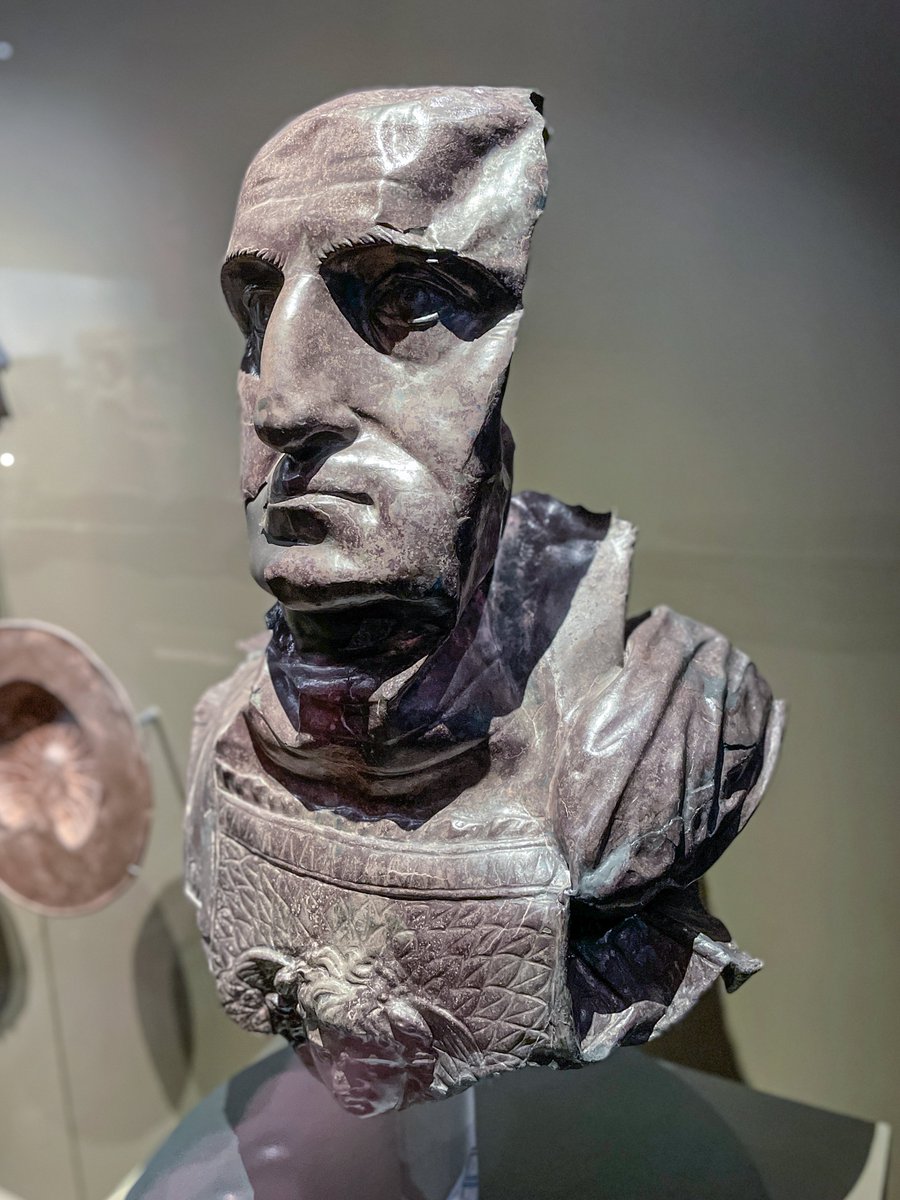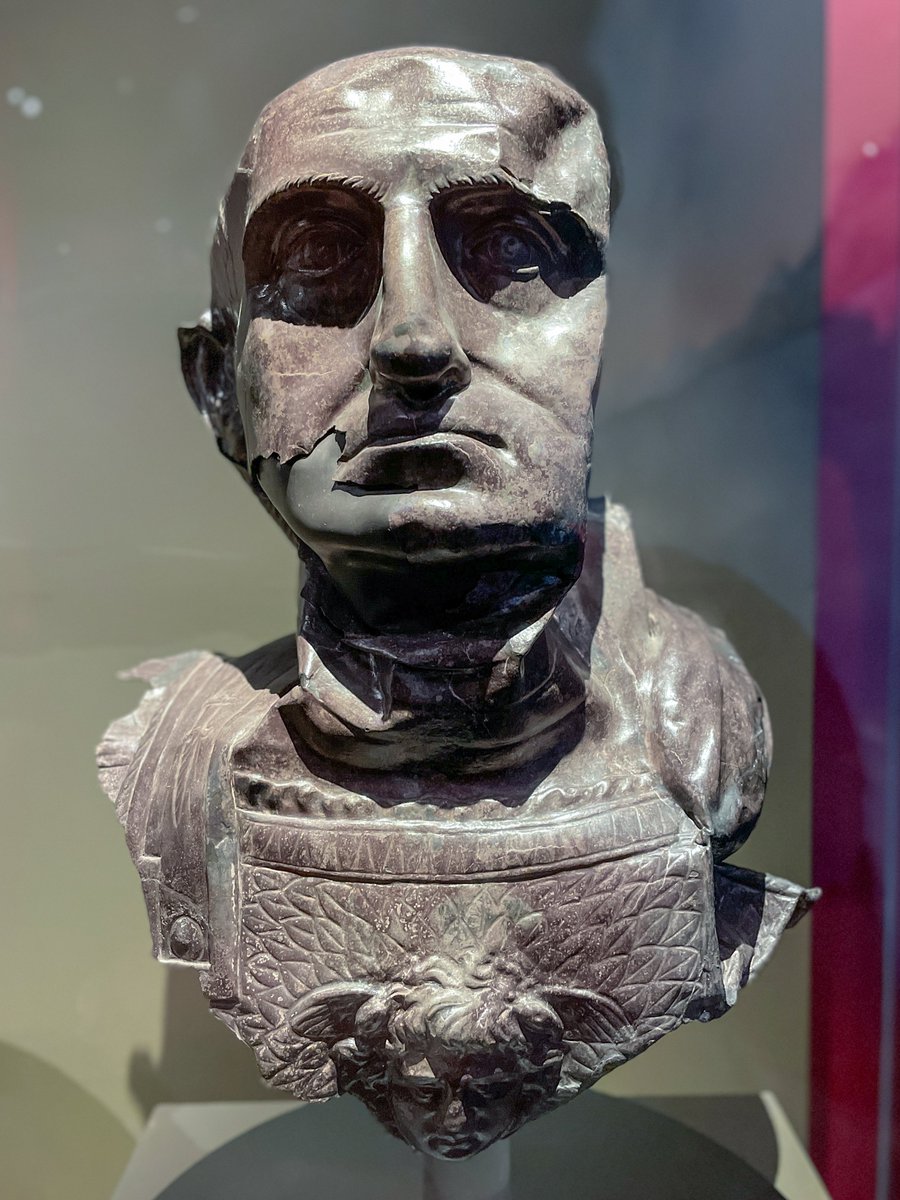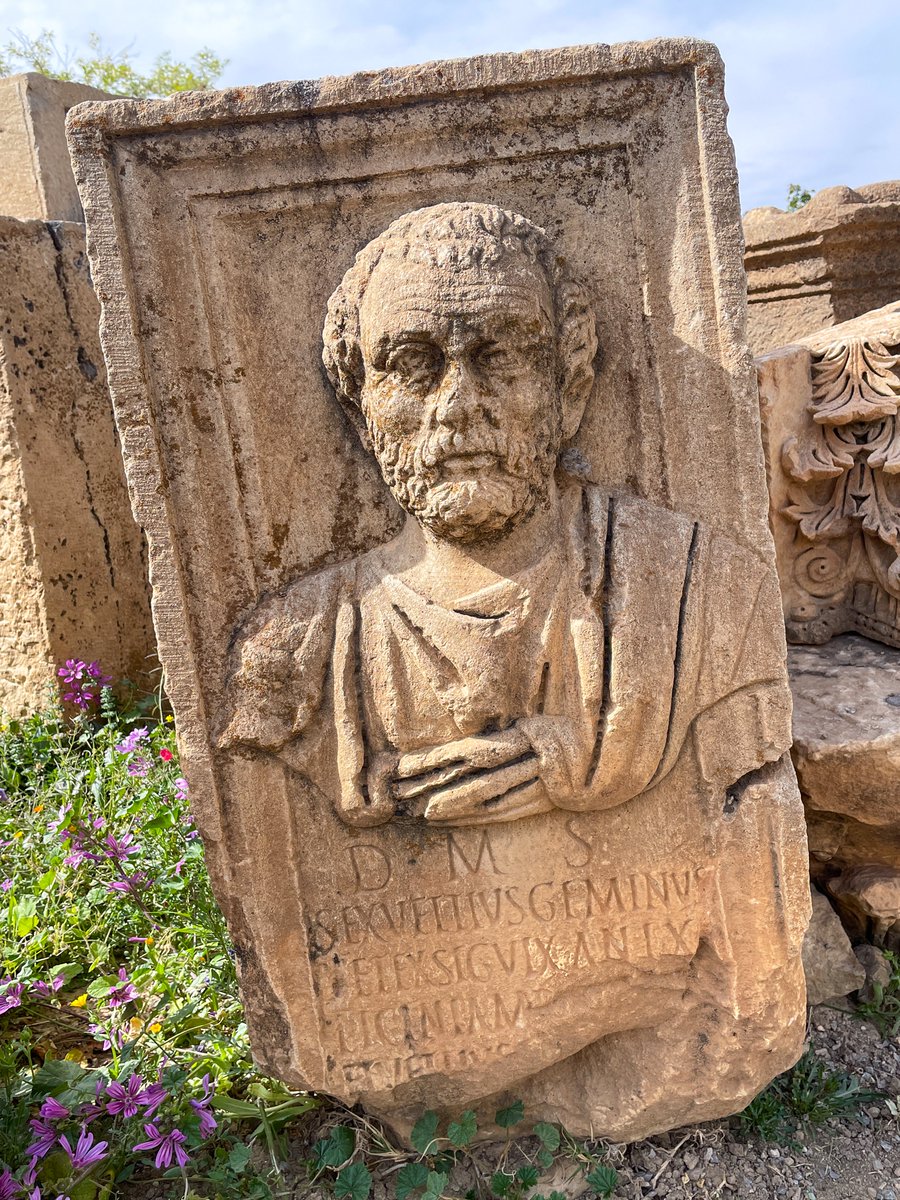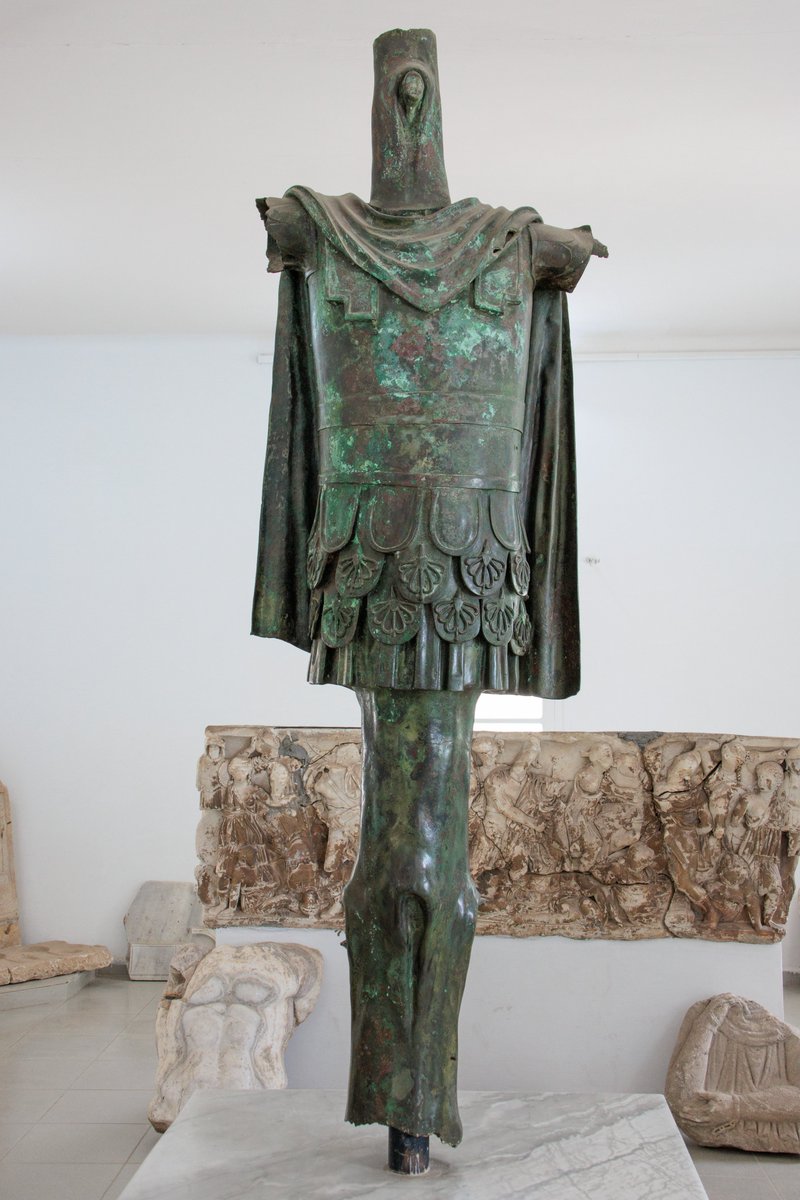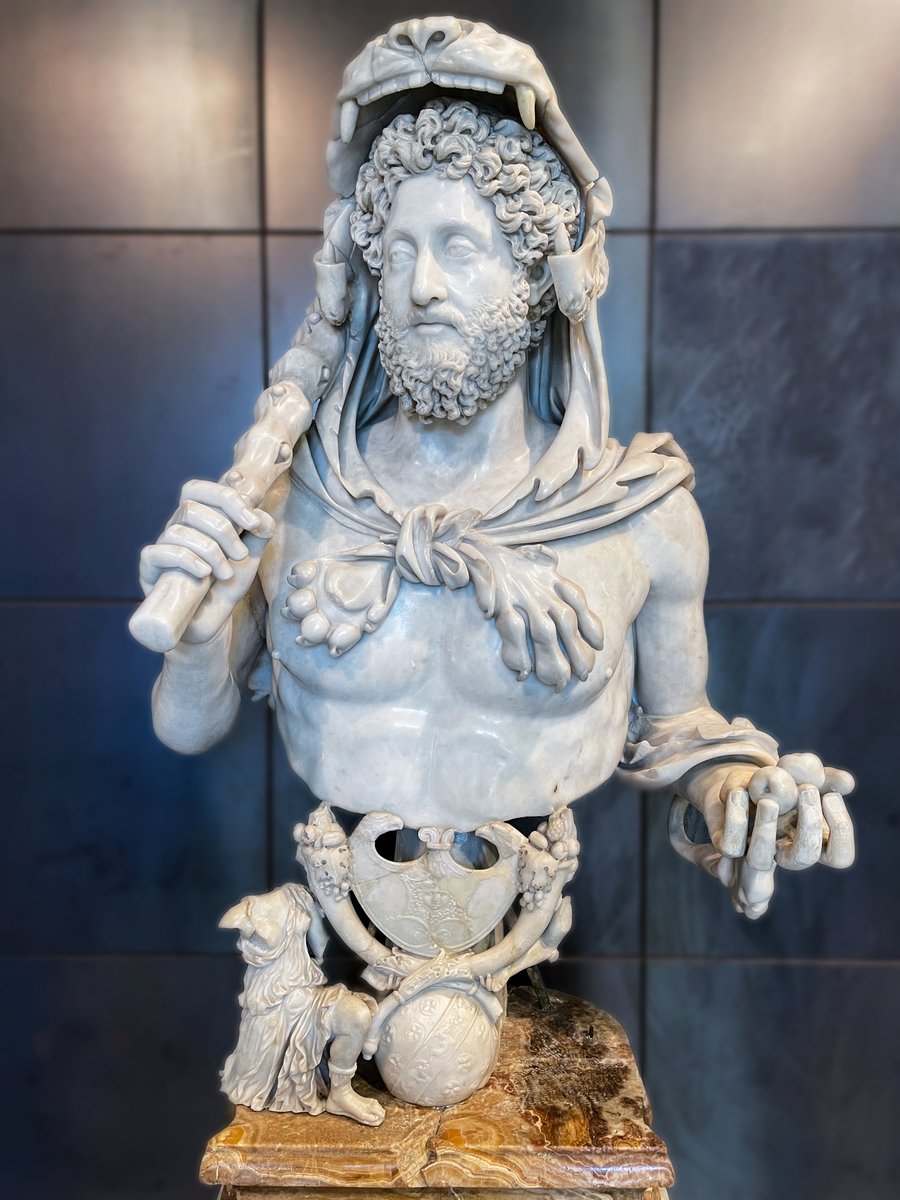1) The Roman Capitolium of Brescia (ancient Brixia). Fortuitously buried by a landslide in the Middle Ages, the remains of the Capitol temple are a wonder in themselves - but what archaeologists discovered inside is truly unique. Let's take a journey into this remarkable site.. 

2) A visitor to modern Brescia can walk in a town square on the site of Brixia's Roman forum (Piazza del Foro), at the end of which still looms the Capitoline temple, dedicated to the triad of Jupiter, Juno and Minerva - a rare, immersive archaeological experience.. 

3) The temple was initially excavated in the 19th century and retains many rare external features, such as its marble podium and wider pronaos forecourt, with drains skirting around its exterior. But it is inside the temple we find the most sensational survivals.. 

4) Landslips that engulfed the temple helped preserve much of the ruins from the usual medieval destruction, encasing it like a time capsule. Inside archaeologists found the original marble flooring of its three sacred chambers (cellae) dating to the 1st century. 

5) This incarnation of the temple, built in 73 AD under Vespasian, had many such wonders to present to archaeologists, but before we look at those let's delve deeper. This was the last of three rebuildings of the sanctuary on the site, with one built on top of another.. 

6) When excavators explored the rear of the site they found the Flavian temple had been built atop earlier Augustan and Republican phases. In a stunning survival, the walls and interior cella of the much earlier Republican temple dating to around 90 BC also began to emerge... 

7) An ancient space that almost defies belief: the sacred cella of a Republican temple to the Capitoline gods, c.90 BC. Very little evidence survives from the ancient world about the decoration of temple interiors but here we find intact splendid stucco and fresco decoration.. 

8) The floor of the chamber comprises an elegantly simple black and white mosaic. Miraculous early-Second-Style frescoes adorn the walls, punctuated by evenly spaced ionic columns.. 

9) The engaged columns at the ends of the chamber emerge from the walls in three-dimensional stucco, while those along the edges are entirely painted, creating an ingenious illusion of space. 

10) The inventive trompe-l'œil frescoes imitate decorative marble panelling around the cella walls. Adding further to the illusion of depth, an ornate curtain is strung along the lower section of the fresco, covering the plainly painted wall underneath. 

11) I love this delightful detail where the curtain screen is flung over, revealing some of the green painted wall underneath. So playful and creative. Again for emphasis, you almost never see decoration from inside any Roman temple, let alone a Republican one! 

12) A detail of the imaginary curtain strung around the walls of the Republican cella. Studies have shown that the fresco was polished with beeswax and olive oil to make the sections imitating stone shinier and even more convincing! 

13) Incredibly, we even know who financed this glorious interior design, thanks to a Republican inscription that was found in the chamber!
'Lucius Hostilius Fronto and Gaius Clodius Merga paid for the stucco decoration'
'Lucius Hostilius Fronto and Gaius Clodius Merga paid for the stucco decoration'

14) A corner of the cella shows how the second temple on the site cut into the first; here we see a section of later wall and floor from the Augustan era. Luckily for us, instead of demolishing earlier structures, Romans often in-filled them to act as foundations for the new.. 

15) A detail of the wall fresco from the second phase of the temple, dating I believe to the Augustan age. Let's head back up to the Flavian era temple and see what other remains await us... 

16) The main hall of the temple, also with its original floor. Today it is used to display inscriptions from ancient Brixia but in Roman times the chamber was dominated by the cult statue of seated Jupiter, almost 5 metres in height, of which fragments are displayed. 



17) Heading into the east chamber originally dedicated to either Juno or Minerva, we are struck by another ancient marvel: The Winged Victory of Brescia.. 

18) The exquisite bronze statue represents another miraculous survival, a rare full-length bronze from the ancient world. Victoria would have originally rested her foot on the helmet of Mars, while she inscribed a shield with details of the latest Roman victory for all to see.. 

19) Recent analysis has shown that the statue was produced just after the mid 1st century AD in a specialised workshop, likely in northern Italy. It was made in several sections using the indirect lost-wax casting technique, which were then seamlessly joined together. 

20) Emperor Vespasian himself may have commissioned the statue when he took control of the empire in 69, after winning a decisive battle near Brescia against the forces of Vitellius and bringing to an end the chaotic Year of the Four Emperors. 

21) The goddess is clothed in a light garment that adheres closely to her body, fastened by brooches at her shoulders. Around her hips is wrapped a heavier himation cloak, the folds of the cloth rendered with masterful precision.. 

22) The wings of Victory. Found together with the statue, the wings are painstakingly executed with delicate overlapping feathers. Lighter feathers in the upper wing lead down to longer, flatter ones in the lower wing, each covered in fine detail. 

23) The Winged Victory surrounded by employees of the Museo Patrio in Brescia, at the start of the 20th century. (Image: Archivio fotografico Musei di Brescia) 

24) As magnificent as the statue is, the context of her discovery on 29th July 1826 is even more extraordinary. The Victory was found intentionally hidden between two walls of the temple, secreted away in a time of crisis, likely in the late 4th century - and she was not alone... 

25) The statue was just a part of the Brescia Temple Bronzes - one of the most significent caches of Roman bronze ever discovered. The hoard consisted of metal statuary, busts and perhaps most intriguingly, bronze fixtures and ornamentation stripped from the temple itself.. 

26) The Temple Bronzes provide a spectacular insight into the prolific use of bronze in Roman monumental architecture, elements of which almost never survive, such as bronze door frames and decorative wall mouldings. 





27) Also present were bronze relief figures, here what seems to be a captive with hands bound behind his back, hinting at wall-mounted bronze tableaux in or around the temple - again, an artform almost unknown from the ancient world due to the valuable metals being melted down.. 

28) Six bronze heads were also among the temple hoard, five male and one female. The woman wears an ornate hairstyle typical of the Flavian dynasty that built the Capitolium - possibly Domitian's wife Domitia or Titus' daughter Julia - her inlaid eyes still in place. 

29) The gilded-bronze male heads included later Roman emperors such as a bearded portrait possibly representing Septimius Severus (r.193-211), and a closely cropped portrait of a soldier-emperor, possibly Claudius II ‘Gothicus’ (r.268-270). 



30) The Capitolium of Brescia is a truly astonishing site, with many unique survivals hugely informative to ancient historians: surviving interiors of successive temples dating back to the Republic and hoarded bronze of every description gathered from a Roman city in crisis.. 

31) Brescia can be easily reached in under an hour from Milan by train, the Roman Capitolium being just one of its many outstanding historical locations. Highly recommended! I hope you enjoyed this brief tour through an endlessly surprising Roman site. {END} 

Read the unrolled thread here: threadreaderapp.com/thread/1538526…
• • •
Missing some Tweet in this thread? You can try to
force a refresh








